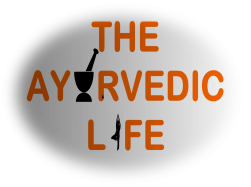Mutigrain, high-protein adai is a high-fiber (oats, wheat, rice) mix of grains and lentils, soaked and ground with digestive spices to create a very healthy and tasty treat. You can make mini versions of these for your kid’s lunch box. It is a great breakfast or dinner dish as well. Grind the batter ahead of time and enjoy quick fixes for your meals without compromising on either health of taste!
The traditional version of adai uses only rice. Addition of oats and wheat is an attempt to reduce the glycemic index of the dish and increase fiber content. You can always try an all-rice version for a change – it is just as yummy and a good diet option for those who are avoiding gluten, for whatever reasons.
In the picture, I’ve soaked rice and lentils to make an all-rice version of adai.
Ingredients (serves 8-10 people – makes about 25-30 medium sized adais):
- Steel-cut oats (1/3 cup)
- Broken wheat (1/3 cup)
- Sona Masoori rice (1/3 cup)
- Idli rice (1/4 cup)
- Split Green Gram (green moong) Dhal (1/5 cup)
- Split Yellow Gram (yellow moong) Dhal (1/5 cup)
- Bengal Gram (Chana) Dhal (1/5 cup)
- Black gram whole (Urad) Dhal (1/5 cup)
- Orange lentil (masoor) dhal (1/5 cup)
- Ginger (1 inch piece)
- Green chilly (1 or per taste)
- Red chilly (1 or per taste)
- Curry leaves (a handful or as available)
- Asafetida (1/2 tsp)
- Salt (to taste)
In the picture below, I’ve soaked oats, wheat and rice with only whole green gram (moong) pulses.
Method:
- Soak the grains and lentils in enough water for at least 4 hours with the ginger, chillies, and curry leaves. You can soak it overnight as well.
- Grind it in a grinder or a blender, adding asafetida and salt. Don’t add all the water at one time. Add water a little at a time, until you have ground the grains, lentils, and spices to the desired consistency.
- You may grind the adai batter to a fine consistency or a coarse consistency, depending on your preference.
- After grinding the batter, you can ferment it for some time. We usually keep the batter overnight in the oven with the light on. Adai batter doesn’t need to ferment (or be that sour as idli/dosa batter) as much. It can be used even without fermentation.
- I sometimes add vegetables to this batter to further increase the nutritional value, also making it a complete meal in itself. In this picture, I’ve used spring onions, grated carrots and spinach.
- Heat a flat dosa griddle on medium for a few minutes. To test if the pan is ready, sprinkle some water. If it sizzles and evaporates in a few seconds, it is hot enough.
- Take some batter in a ladle (or spoon, if you are making mini-adais) and pour on the pan. Spread it using circular motions, starting from the center and moving outwards. For thicker adais, you needn’t spread them too thin or can completely skip spreading the batter.
- Pour some oil around the adai and a drop in the center. Cook covered for around 30 seconds (the amount of time depends on the heat setting).
- Take out the cover, flip the adai and cook uncovered for a minute or so. The adai should reach a golden brown color on both sides. Adjust the heat as necessary, depending on the color of the adais.
- For my children’s lunch, I served mini-adais with roasted yellow and green zucchini circles and raw cucumber and carrot sticks.

Tastes (Rasa):
Sweet (grains, lentils, pulses, oil), sour (fermentation brings the sourness), salty (salt), bitter (curry leaves), pungent (ginger, chillies), astringent (asafetida).
Doshic Influence:
Lentils have a tendency to be slightly vata aggravating, because they are slightly harder to digest and tend to cause flatulence. Of course, each of these lentils we have used have varying degrees of this – for example, moong is relatively easier to digest and the most tridoshic of all lentils. Soaking the lentils enhances their digestibility. Also, addition of hing, ginger, and curry leaves increases digestibility of adai to a large extent. Addition of oil while making the adais is also good for combating vata’s dryness. Vatas must ensure that the lentils have been soaked for as long as possible (8 hours is ideal) and must make use of adequate oil and spices while preparing adais. Oats and wheat tend to have a kapha aggravating quality, especially in excess. Rice does too, but is easier on the digestion as compared to other grains. To offset this, we have many pungent, warming ingredients like chillies, ginger, and curry leaves. Kaphas can enjoy adais in moderation and with a moderate amount of oil. Pittas should be okay with the ingredients – as always, go easy on the chillies!
Effects on the Mind (Gunas):
This is a very sattvic dish if the digestive fire (agni) is able to digest it. Don’t over-ferment the batter – otherwise sour taste will be increased, thereby increasing rajas. Reduce pungency and saltiness too. Using fresh ingredients and using up the batter within 3-4 days of refrigeration is ideal – at most 1 week in cooler climates and 2-3 days in warmer climates.









